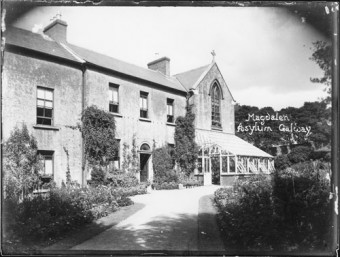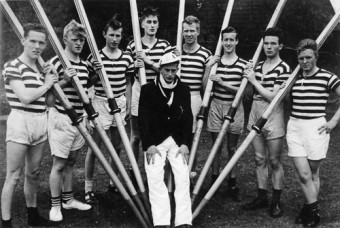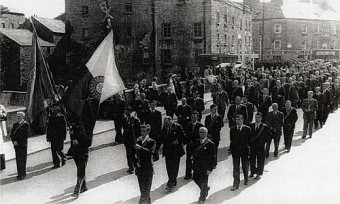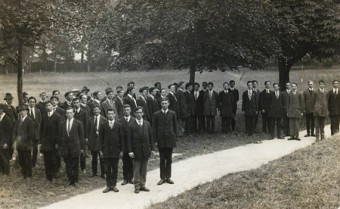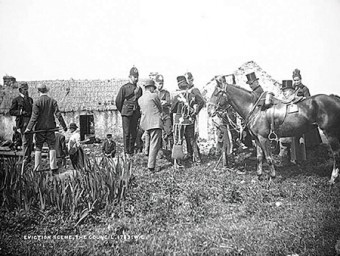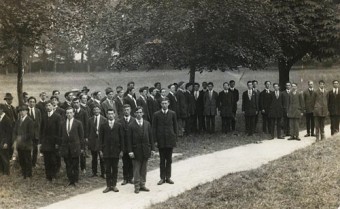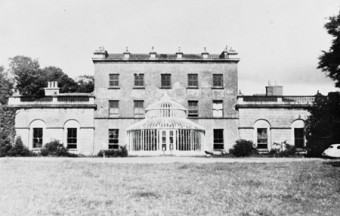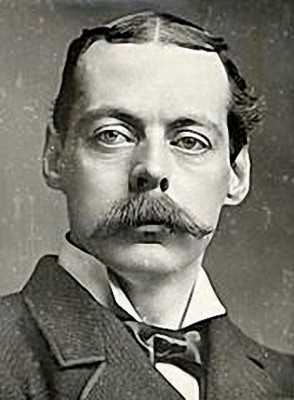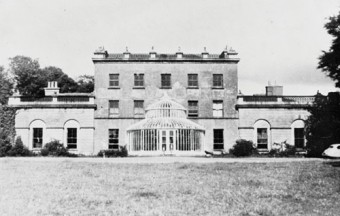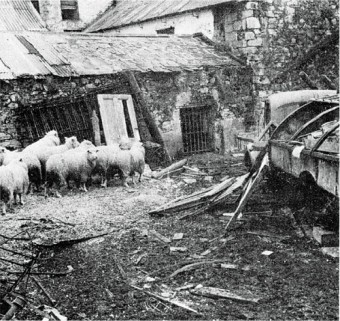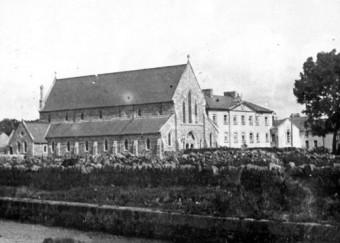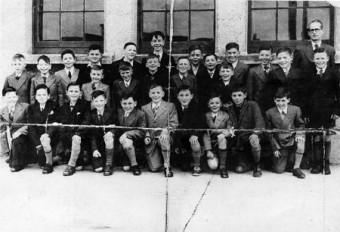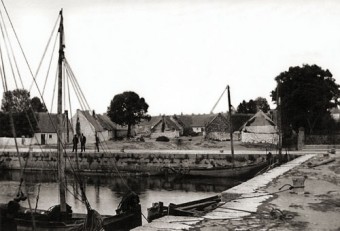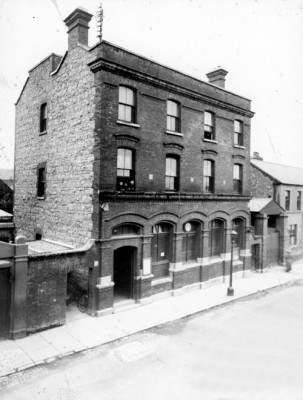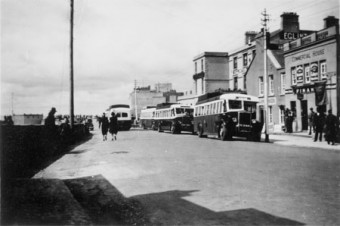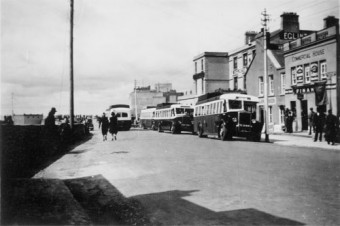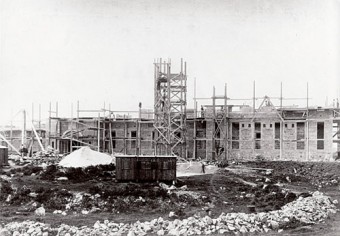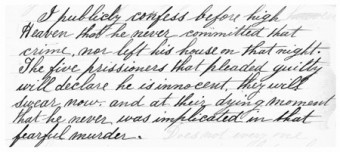The Magdalen Asylum, Galway
Thu, Mar 21, 2013
The Magdalen Asylum in Galway was founded in 1824 by a private person, Ms Lynch, and was managed by a society known as the Association of Ladies of the Saint Magdalen Society. At the request of the founder, the Sisters of Mercy became responsible for the operation of the institution following her death in 1845. The laundry and living quarters were separate from the convent/mother house in Galway. The living quarters included three dormitories, a kitchen, dining room, infirmary, recreation room, and a chapel. There was also a farm across the road.
Read more ...The head of the river
Thu, Mar 14, 2013
Rowing is a sport of endurance, strength, and finesse, a sport naturally suited to Galway where the river connects Lough Corrib with the sea. The earliest reference we have to competitive rowing on the Galway river is 1839. The first rowing club established here was the Corrib Rowing and Yachting Club in 1864 (149 years ago!) and as other clubs formed, rowing matches became more competitive. In 1868, Commercial Rowing Club was formed and the inter-club rivalry generated a lot of interest in the sport.
Read more ...A procession on O’Brien’s Bridge
Thu, Mar 07, 2013
Our photograph today is of a group from the Sodality in the Jes being led by Bobby Molloy with the IHS flag. They are crossing O’Brien’s Bridge as part of the annual Procession of the Most Blessed Sacrament. Willy Forken is in front of the right hand row, and among the others are Johnny Holland and Johnny Whelan.
Read more ...Student revolutionaries
Thu, Feb 28, 2013
Seamus Murphy was the officer commanding the Galway Brigade of the IRA from 1917 to 1920. He was very conservative and vetoed a lot of proposed operations. He eventually moved back to Dublin where he was heard complaining that he could not get any Galway men to fight.
Read more ...What more could a landlord do?
Thu, Feb 28, 2013
Despite some honourable exceptions the conduct of most Galway landowners to their tenants during the latter part of the 19th century was a disgrace. It led to disastrous social consequences. Although ultimately, the landed class were removed from their houses and lands, as a result of the Land War and acts of parliament; in many cases the peasantry too was decimated, demoralised and scattered to the winds.
Read more ...Student revolutionaries
Thu, Feb 28, 2013
Seamus Murphy was the officer commanding the Galway Brigade of the IRA from 1917 to 1920. He was very conservative and vetoed a lot of proposed operations. He eventually moved back to Dublin where he was heard complaining that he could not get any Galway men to fight.
Read more ...The Joyces of Mervue
Thu, Feb 21, 2013
The first recorded use of the name Joyce was Joy in the 13th century State papers. Sometime the name was rendered as Joy, Joyces, Jorz, Jorse, or the standard spelling, Joyce. The Joyces of Mervue were a distinguished branch of the family. Marcus Joyce, a rich merchant who bought land in County Mayo in the late 16th century, was probably the founder of this branch. About a century later, the Joyces emerged as a leading merchant family in Galway. Hardiman states that Joyce’s house was at the corner of Abbeygate Street and Market Street and that this family was head of the name. They were eminent wine merchants.
Read more ...‘If you want to know who I am, I am John D Mahon of Ballydonnellan castle’
Thu, Feb 21, 2013
Week II
The Joyces of Mervue
Thu, Feb 21, 2013
The first recorded use of the name Joyce was Joy in the 13th century State papers. Sometime the name was rendered as Joy, Joyces, Jorz, Jorse, or the standard spelling, Joyce. The Joyces of Mervue were a distinguished branch of the family. Marcus Joyce, a rich merchant who bought land in County Mayo in the late 16th century, was probably the founder of this branch. About a century later, the Joyces emerged as a leading merchant family in Galway. Hardiman states that Joyce’s house was at the corner of Abbeygate Street and Market Street and that this family was head of the name. They were eminent wine merchants.
Read more ...Galway abattoir
Thu, Feb 14, 2013
In the early days, farmers killed their own livestock, and in urban areas the killing was done by butchers. These victuallers would hang raw carcasses of meat outside their shops to show how fresh they were and to attract customers. It was only when the city fathers built an abattoir at the junction of Newtownsmyth and Bowling Green that slaughtering became subject to veterinary inspection and control in Galway. Our photograph was taken in 1966 and shows sheep awaiting their turn to enter the slaughterhouse through the grill gateway. They had already been in the yard for five days. The yard was connected to the abattoir buildings.
Read more ...St Joseph’s Church
Thu, Feb 07, 2013
On this day, February 7, in the year 1886, St Joseph’s Church was consecrated. It was to be the main church of the Parish of Rahoon, which at that time extended from Corcullen to Furbo. There were already two chapels in the parish, one in Bushypark and one in Barna, and they served their own areas. For those parishioners living closer to the town, there was no designated church. Some would attend Mass in the chapel of the Presentation Convent, but it was not very large and worshippers often had to kneel on the ground outside, irrespective of the weather conditions. The parish had a big population and major annual events such as confirmation had to be moved to the Pro-Cathedral.
Read more ...Calling all Claddagh School past pupils
Thu, Jan 31, 2013
The historian James Hardiman, in describing the Claddagh, said: “It is said that they considered it a kind of reproach either to speak English or to send their children to school, and that a schoolmaster among them would be considered a phenomenon; but of late there are some exceptions to this rule. How far education would make these people happier in themselves, or more useful members of society, is a matter of doubt, but it is certain that the trial has never been made, although a most respectable convent lies at the head of their village, to which they are liberal benefactors.”
Read more ...The Claddagh Quay
Thu, Jan 24, 2013
This photograph of the quayside in the Claddagh is one of the remarkable images in a book entitled Jane W Shackleton’s Ireland compiled by Christiaan Corlett and published by Collins Press. Jane Shackleton was given a camera and she went around Ireland with it between 1891 and 1906. She built up a remarkable collection, some of which are included in this delightful book.
Read more ...The General Post Office
Thu, Jan 10, 2013
Records show that post office business has been conducted in the Eglinton Street area since the 1850s. The Ordnance Survey map of 1872 shows the ‘Postal and Telegraph Office’ in the house at the corner of Francis Street and Daly’s Place, where Emerson & Conway solicitors are today. Prior to 1885, the local postmaster Mr Cornwall provided the premises but, as business expanded, the building became too small. It could not accommodate parcels and a separate outside premises for a parcel office was rented at a cost of £15 a year.
Read more ...When buses came to Galway
Thu, Jan 03, 2013
The first public transport system in Galway was the horse drawn tramway. It ran until World War I when the British army commandeered most of the horses. By this time motorised transport was also providing competition, and this speeded up the demise of the tram system.
Read more ...The man who rescued Lancelot from the River Clare
Thu, Jan 03, 2013
One of the most dramatic and legendary events in the history of Irish foxhunting took place with the Galway Blazers on December 19 1953 between Cregg Castle, Corrandulla, and beyond the Clare river, near Anbally. This is great fox hunting terrain. It’s level going, open and free. When on a good scent the hounds will skim the walls, and allow no time for man or beast to make mistakes if they want to stay close to them. December 19 1953 was a clear, frosty day. The hounds were in full pursuit ‘skimming the long low walls the way the swallows do’. After a four mile chase they hit the river Clare about a mile short of the nearest bridge at Corofin village.
Read more ...When buses came to Galway
Thu, Jan 03, 2013
The first public transport system in Galway was the horse drawn tramway. It ran until World War I when the British army commandeered most of the horses. By this time motorised transport was also providing competition, and this speeded up the demise of the tram system.
Read more ...St Mary’s College, 1912 – 2012
Thu, Dec 27, 2012
Our photograph today which shows the beginnings of the construction of St Mary’s College was taken in 1911.
Read more ...Remembering Myles Joyce
Thu, Dec 13, 2012
In April 1980, I interviewed Mrs Sarah Lynskey from Bridge Street, on her 100th birthday, for this column. In the course of our conversation, she told me her earliest memory was of “kneeling on the Salmon Weir Bridge with my mother and a lot of Claddagh women praying. I know they were Claddagh women because I can still see the triangles of shawl as they knelt on the bridge. We were praying for a fellow, they were going to hang him the next day. Joyce was his name”. She was talking about Myles Joyce, an innocent man who was to be hanged along with two others for the Maamtrasna murders.
Read more ...
